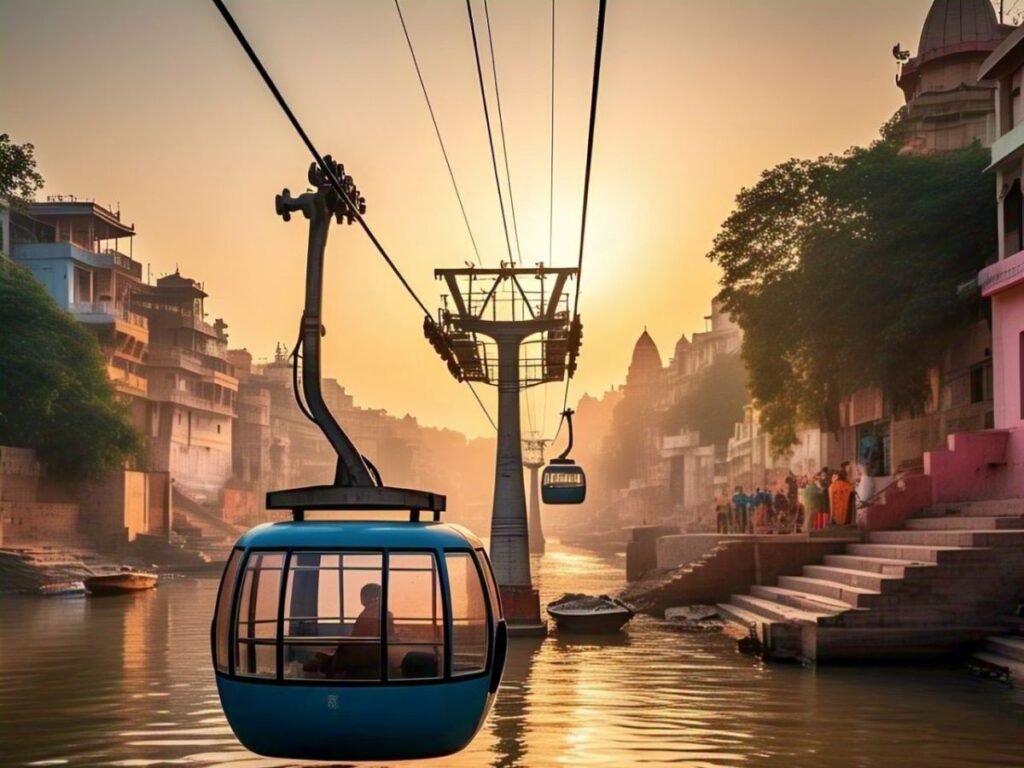Experience the Thrill of Aerial Travel in Varanasi with India’s First Urban Ropeway Transport
Varanasi, one of India’s most ancient and culturally rich cities, is all set to redefine urban transport with its first-ever ropeway system. The trial run of this ambitious project has commenced, and the people of the city have gathered in large numbers to witness the gondolas gliding through the sky. This project, initiated in the parliamentary constituency of Prime Minister Narendra Modi, aims to provide a seamless, efficient, and scenic mode of transport between Cantt Railway Station and Godowlia, covering major city junctions.
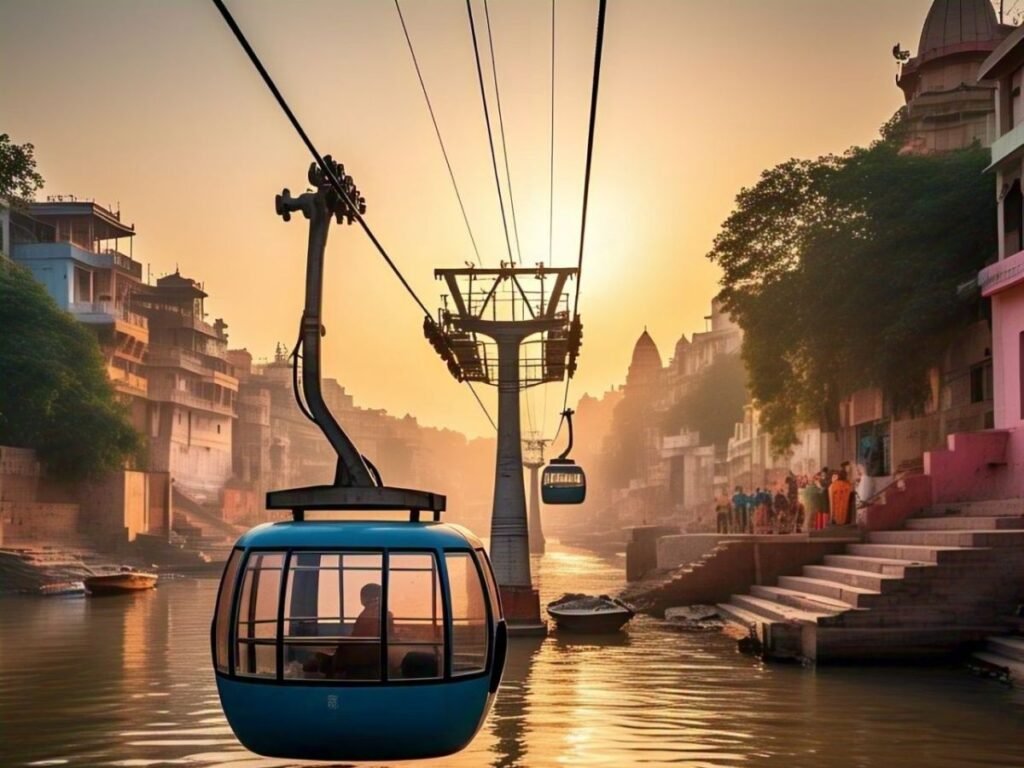
A Game-Changer for Varanasi’s Traffic Woes
Varanasi, being a densely populated and highly congested city, faces constant traffic challenges. The ropeway system is expected to ease congestion by offering an alternate transport mode above the busy streets. Once operational, this project will be a milestone in India’s urban mobility sector, marking the country’s first-ever urban ropeway transport. The city’s narrow lanes and heavy pedestrian movement make traditional vehicular transport inefficient, necessitating the need for innovative solutions like this ropeway system.
The increasing population and rising tourism numbers have placed additional strain on Varanasi’s roads. Every day, thousands of devotees, pilgrims, and tourists flock to the city, making travel within the city cumbersome. This ropeway transport system will ensure a significant reduction in travel time and traffic congestion, offering a faster and more comfortable commute.
Trial Run: A Glimpse into the Future of Commuting
The first day of the trial run saw a dummy gondola (ropeway trolley) moving from Cantt Railway Station through Kashi Vidyapeeth to Rath Yatra station. City Commissioner Kaushal Raj Sharma stated that the trial run with a dummy gondola will continue for several months. Initially, the trolley is being tested at a slow pace, and gradually, its speed and load capacity will be increased.
Within the next six weeks, the load testing phase will begin, and further tests will be conducted to ensure safety and efficiency before the final launch. As the project progresses, the authorities aim to have the system operational by May or June.
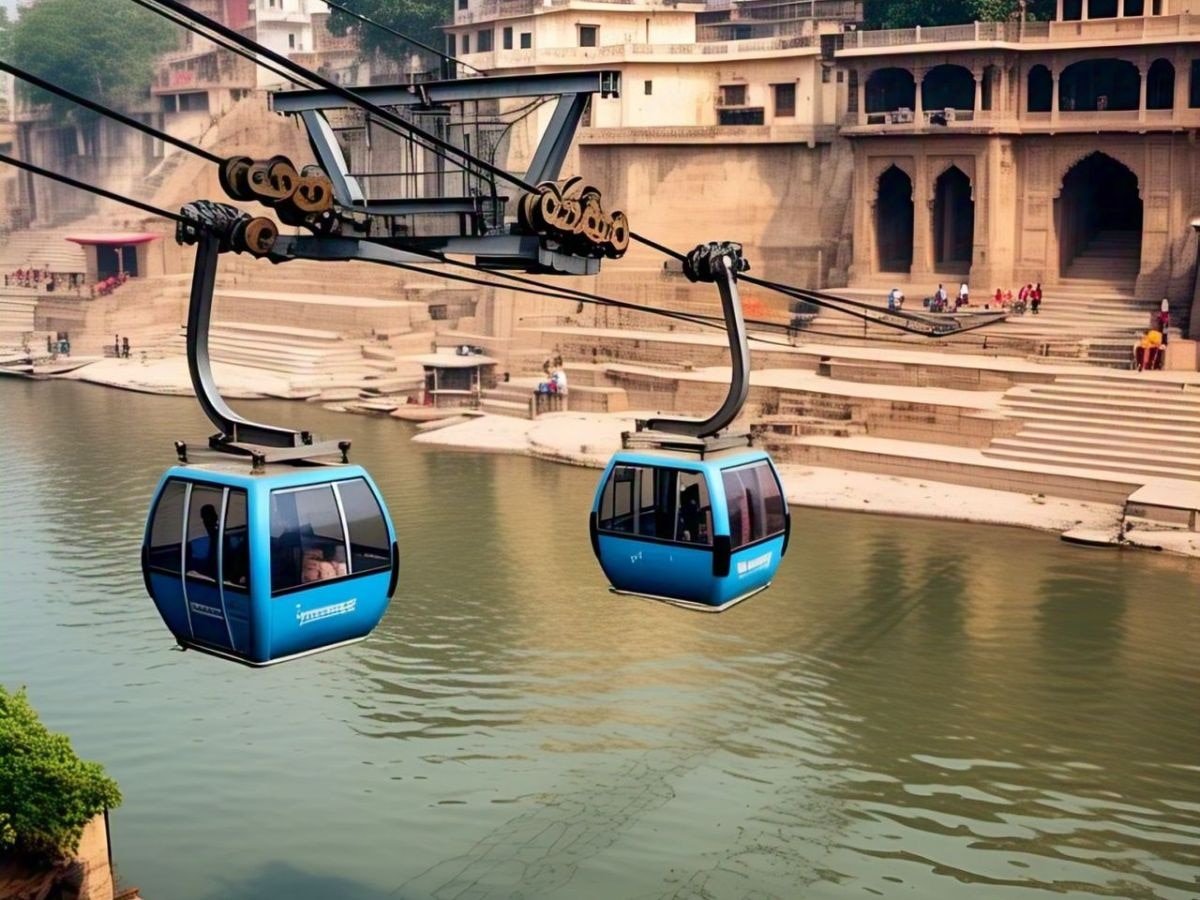
During the initial phase, engineers and project managers will closely monitor the performance of the ropeway. Every aspect, including the movement of gondolas, support tower strength, and operational feasibility, will be scrutinized. Sensors and safety systems will be checked repeatedly to prevent any malfunctions once commercial operations begin.
Key Features of the Varanasi Ropeway
- Total Project Cost: INR 807 crore
- Route Length: 3.8 km (Cantt Station to Godowlia)
- Number of Stations: 4 (Cantt Railway Station, Kashi Vidyapeeth, Rath Yatra, and Godowlia)
- Travel Duration: 16 minutes
- Number of Gondolas: 150 trolleys at an elevation of 50 feet
- Frequency: A trolley every 90 seconds
- Daily Capacity: 90,000 passengers
- Hourly Capacity: 6,000 passengers
These features highlight the efficiency and convenience that the ropeway system will bring. Compared to road transport, where traffic congestion significantly increases travel time, this system will provide a seamless journey between major points of the city.
The Role of Swiss Technology in the Project
The Varanasi ropeway system is being developed with the expertise of Swiss-based company Bartholet. Advanced European technology is being employed to ensure world-class safety standards and operational efficiency. The installation of 15 towers has been completed, and the rope pulling work is underway.
Bartholet is renowned for its expertise in aerial transport solutions. The company’s ropeway systems are known for their durability, efficiency, and safety. The technology used in this project is designed to withstand Varanasi’s climate and ensure reliable operation throughout the year.
A Solution for Tourists and Daily Commuters
The ropeway project will not only benefit the daily commuters of Varanasi but also provide a convenient transport solution for tourists visiting the city. Varanasi is a significant pilgrimage and cultural hub, attracting millions of visitors annually. With this new system, travel time to major locations will be significantly reduced, making it easier for tourists to explore the city.
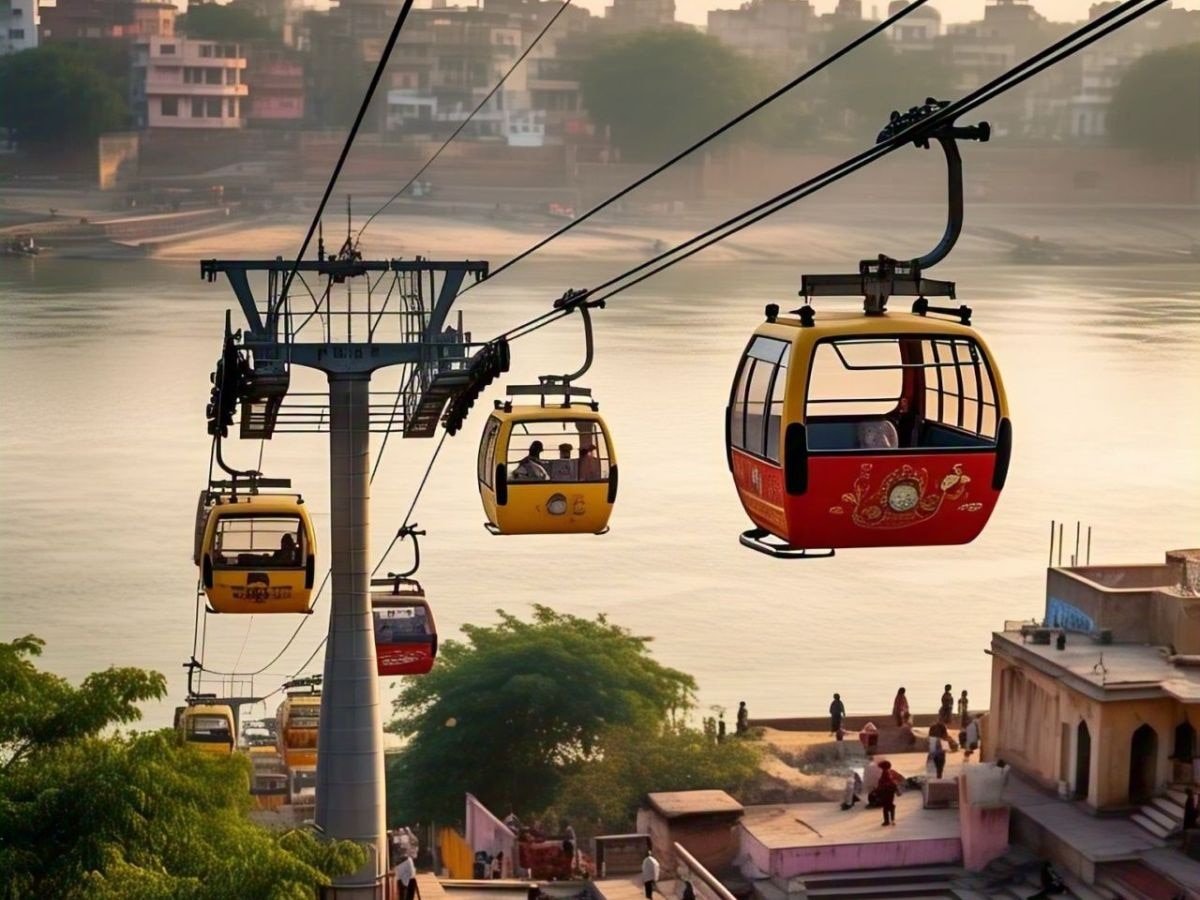
Tourists visiting the Kashi Vishwanath Temple, Dashashwamedh Ghat, and other important landmarks will find it much easier to navigate the city. Instead of navigating crowded streets, they can enjoy a scenic aerial view of Varanasi while reaching their destination quickly and safely.
Economic and Environmental Impact
Boosting Local Economy
The implementation of the ropeway project is expected to generate employment opportunities, boost tourism, and support local businesses. The presence of an efficient transport system will enhance the city’s infrastructure, attracting more investment and development projects.
Local businesses, including shops, restaurants, and street vendors, are likely to see an increase in customers due to the improved accessibility provided by the ropeway. More tourists will be encouraged to explore the city, leading to higher spending and economic growth.
Eco-Friendly Urban Mobility
One of the key advantages of a ropeway transport system is its minimal environmental impact. Unlike conventional transport methods that contribute to air pollution and noise, ropeways offer a cleaner and quieter alternative, supporting Varanasi’s sustainability goals.
The use of electric-powered gondolas will significantly reduce carbon emissions. Additionally, the system requires minimal land usage compared to road expansion projects, preserving the city’s heritage sites and green spaces.
Public Excitement and Future Expectations
The sight of gondolas gliding through the sky has already captivated the local residents, creating a buzz around this innovative mode of transport. Once the system is fully operational, Varanasi will set an example for other cities looking to implement similar urban transport solutions.
The authorities are working tirelessly to complete the remaining testing phases and ensure a seamless launch by mid-2024. With the successful implementation of this project, Varanasi will make history as India’s first city to introduce an urban ropeway transport system, further strengthening its position as a smart and progressive city.
As this project nears completion, discussions are already underway for further expansions. Authorities are considering extending the ropeway network to other congested areas of the city, providing a long-term solution to Varanasi’s traffic woes.
Conclusion
The Varanasi Ropeway project is not just an infrastructure development; it’s a vision of a modern, sustainable, and efficient transport system. With the backing of advanced Swiss technology and robust government support, this initiative will enhance the commuting experience for locals and tourists alike. As the final stages of testing progress, Varanasi is on the verge of experiencing a revolutionary shift in urban transport, making aerial travel a reality in one of India’s oldest and holiest cities.
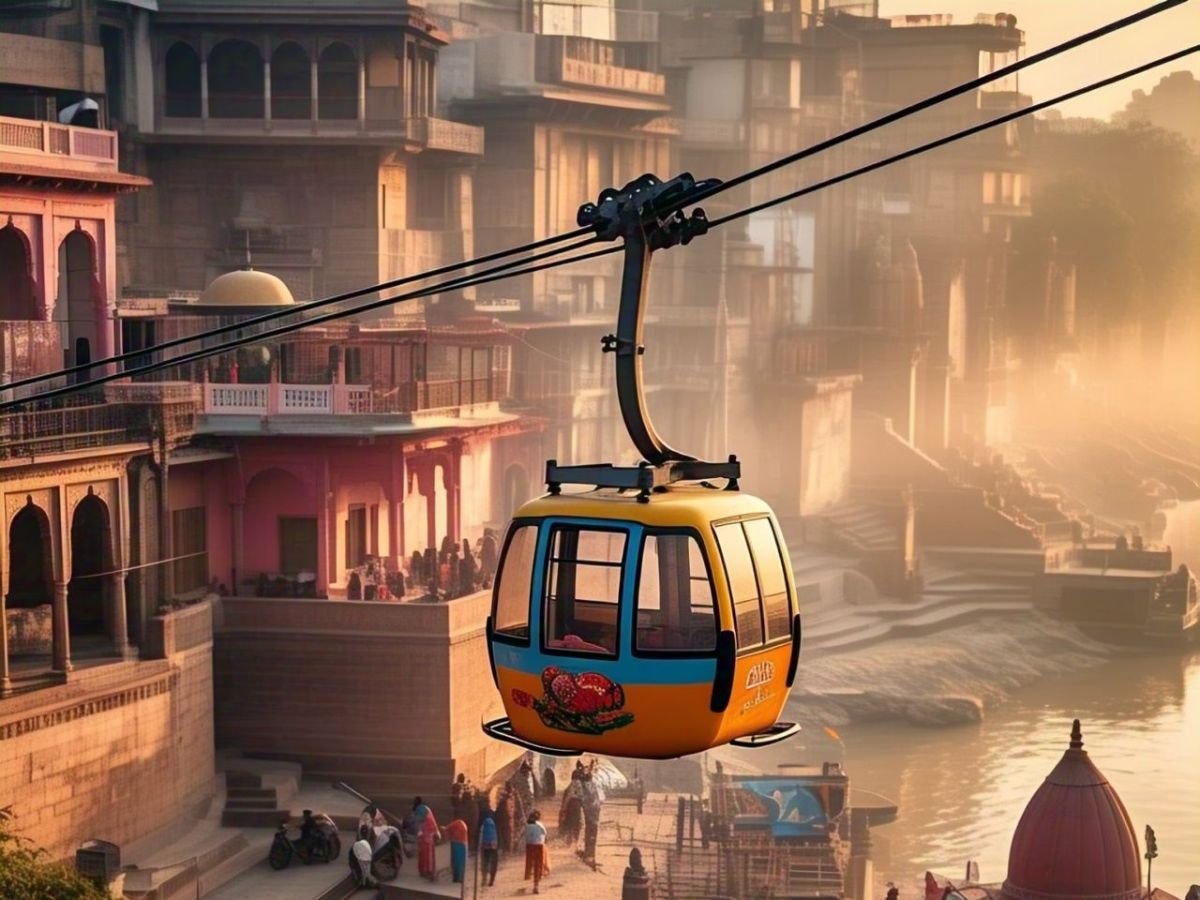
With the implementation of this system, Varanasi will join global cities that have successfully integrated aerial transport solutions, such as La Paz in Bolivia, Medellín in Colombia, and Zurich in Switzerland. The success of this project could inspire other Indian cities to adopt similar solutions, paving the way for a new era in urban mobility.
As the people of Varanasi eagerly await the official launch, the ropeway system stands as a testament to the city’s commitment to innovation, sustainability, and progress. This project is set to redefine how people travel in one of India’s most iconic cities, blending tradition with modernity in a seamless and efficient manner.

